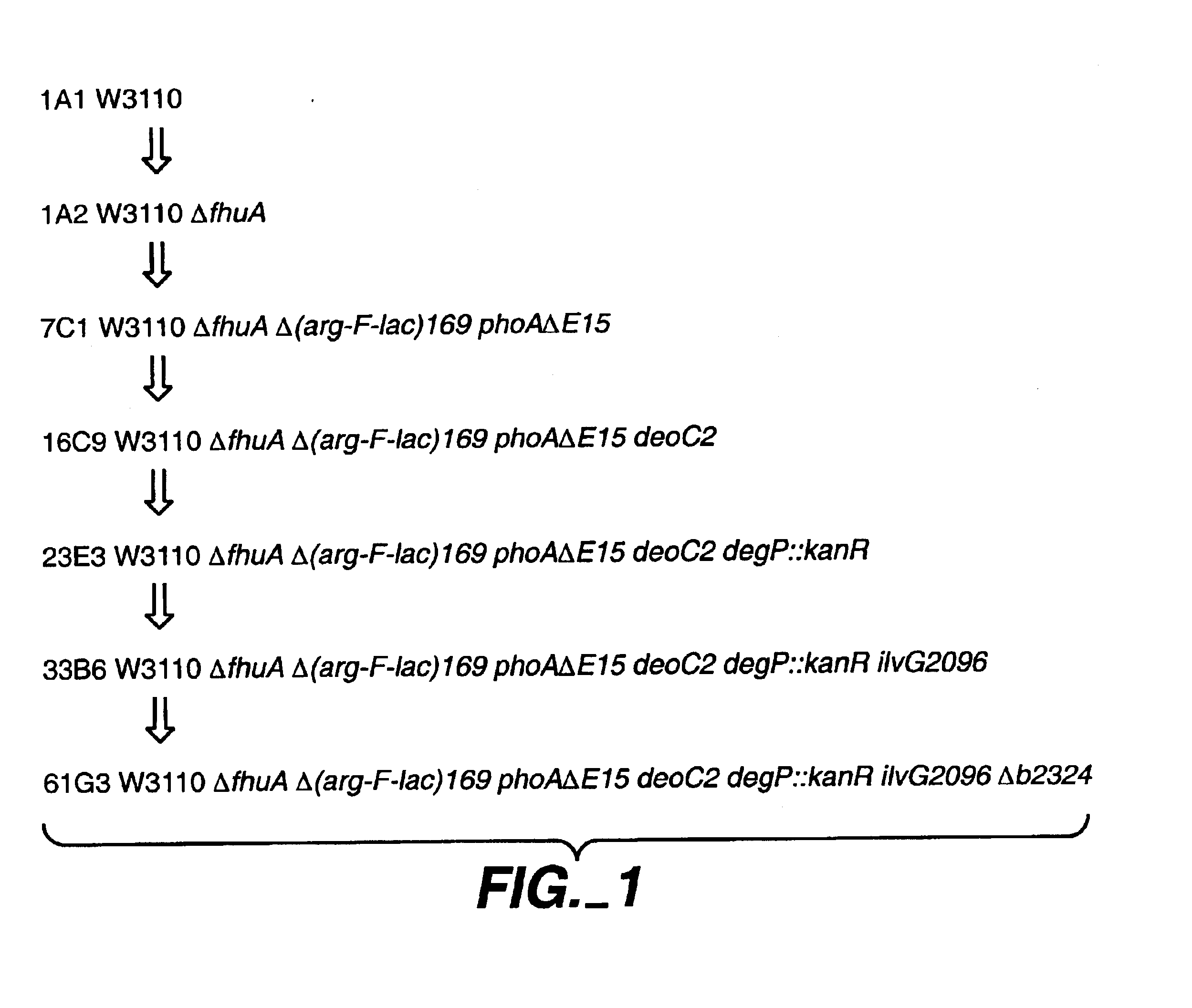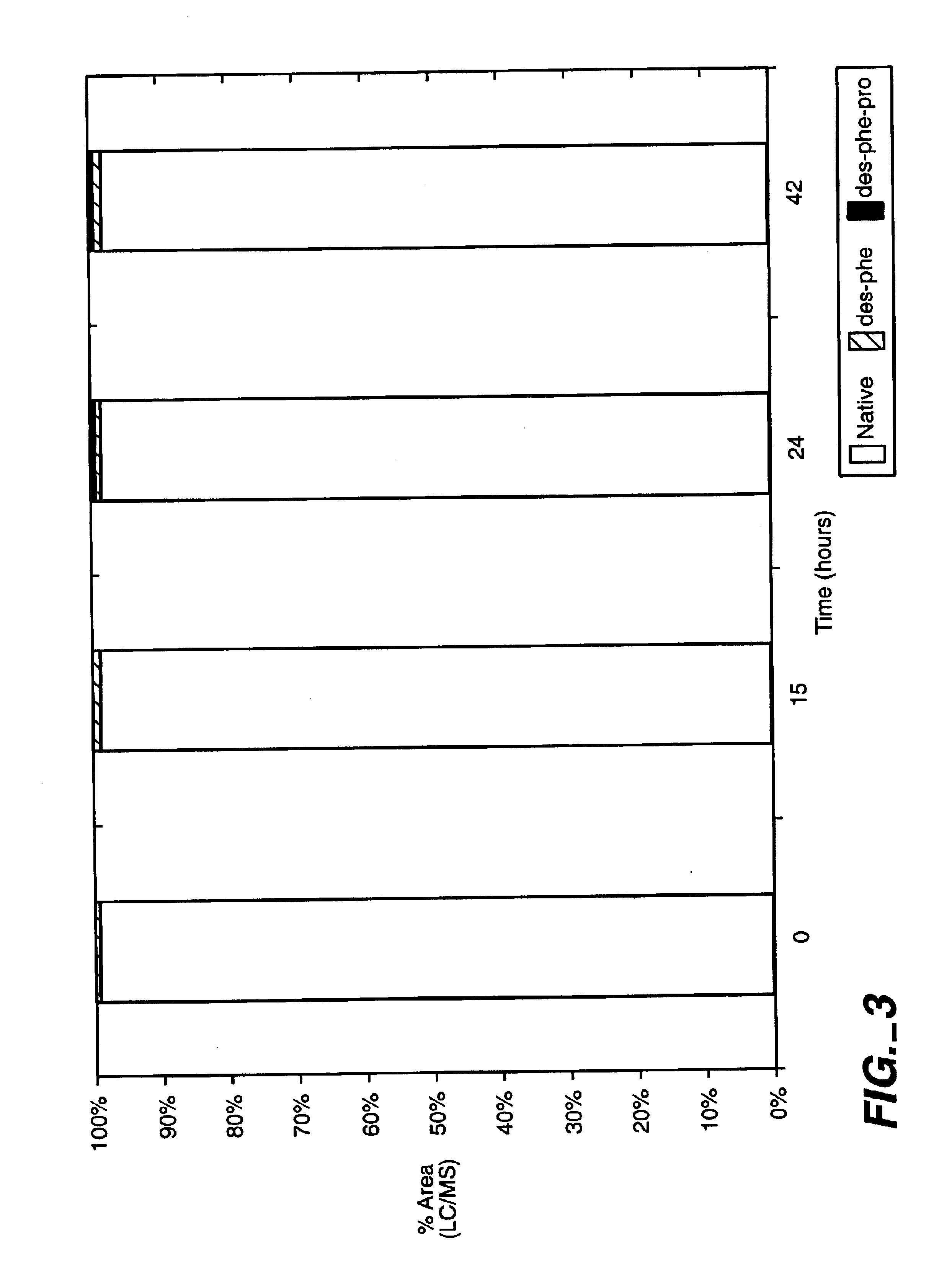Protease-deficient cells
a technology of protease-deficient cells and aminopeptidases, which is applied in the direction of peptides, immunoglobulins, bacteria-based processes, etc., can solve the problems of difficult removal of hgh (native hgh) from the mixtur
- Summary
- Abstract
- Description
- Claims
- Application Information
AI Technical Summary
Benefits of technology
Problems solved by technology
Method used
Image
Examples
example 1
Materials and Methods
[0106]DNA sequences were PCR-amplified upstream and downstream of the yfcK gene encoding b2324 identified by the genomic sequencing project (GenBank listing resulting from Blattner et al, supra). Then these fused sequences were recombined on the chromosome of a W3110 strain by P1 transduction and screened by PCR for deletions (Metcalf et al, Gene, 138: 1-7 (1994)) to produce strain 61 G3, which has the genotype W3110 ΔfhuA Δ(arg-F-lac) 169 phoAΔE15 deoC2 degP: kanR ilvG2096 ΔyfcK.
[0107]Specifically, this strain was constructed in several steps using techniques involving transduction with phage Plkc, derived from P1 (J. Miller, Experiments in Molecular Genetics, Cold Spring Harbor, N.Y., Cold Spring Harbor Laboratory, 1972) and transposon genetics (Kleckner et al., J. Mol. Biol., 116: 125-159 (1977)). The starting host used was E. coli K-12 W3110, which is a K-12 strain that is F-lambda-(Bachmann, Bact. Rev., 36: 525-557 (1972); Bachmann, “Derivations and Genotyp...
PUM
| Property | Measurement | Unit |
|---|---|---|
| temperature | aaaaa | aaaaa |
| time | aaaaa | aaaaa |
| temperature | aaaaa | aaaaa |
Abstract
Description
Claims
Application Information
 Login to View More
Login to View More - R&D
- Intellectual Property
- Life Sciences
- Materials
- Tech Scout
- Unparalleled Data Quality
- Higher Quality Content
- 60% Fewer Hallucinations
Browse by: Latest US Patents, China's latest patents, Technical Efficacy Thesaurus, Application Domain, Technology Topic, Popular Technical Reports.
© 2025 PatSnap. All rights reserved.Legal|Privacy policy|Modern Slavery Act Transparency Statement|Sitemap|About US| Contact US: help@patsnap.com



